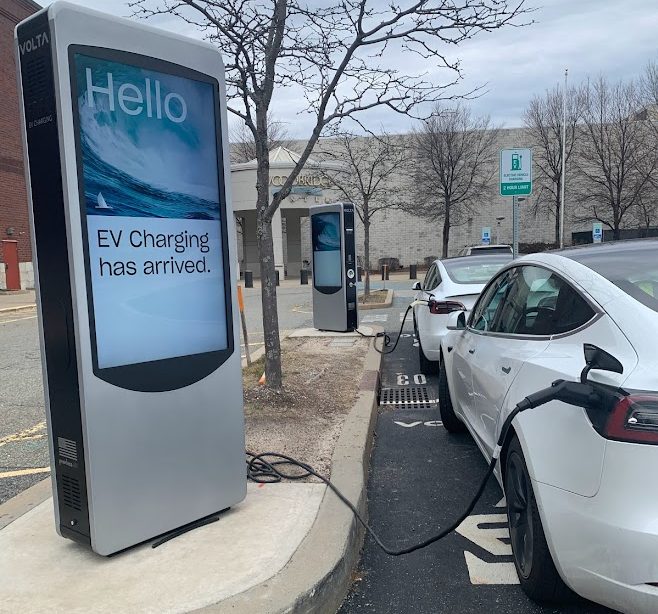In the automotive industry, some cars are icons. The Ford Mustang is just that. The Mustang is an automotive, and an American icon.
It was the early 1960s. Ford wanted to create a new segment in the automotive industry. They wanted to make an affordable, practical, family performance car that also looked good, now known as the “pony car” segment. Pony cars are described as having long hoods, short rear decks, and rear wheel drive. On April 17th, 1964, Lee Iacocca, the General Manager of Ford at the time, made just that happen. Dubbed as a 1965 model, the Ford Mustang was released to the public. The Mustang was released five months before the actual 1965 model year started, so early models are considered “1964 ½” by enthusiasts. People flocked to buy the new Mustang like how people buy the new iPhone these days. The Mustang sold in completely outrageous numbers. On its first day alone, dealers took order for 22,000 Mustangs. After one full year in production, Ford sold over 400,000 Mustangs.

1993 Ford Mustang SVT Cobra R
Mr. Russell Allen, member of the Mustang Car Club of America and owner of multiple Mustangs, describes them as, “great cars for the value.”
In 50 years, there have been 6 generations of the Ford Mustang, the latest being released recently. There have been some ups and downs throughout the years of the Mustang.
The first generation was arguably the best ever made. That’s when people say Ford got the pony car right, which is impressive considering it was their first try at it. The Mustang was small, sporty, affordable, and had a decent amount of power which was a winning recipe, that lasted until about 1973.
In 1973 the oil crisis hit and along came the second generation Mustang, also referred to as the Mustang 2, a smaller, less powerful, and more economical Mustang. The performance numbers from this generation of Mustang were astronomically slow, due to increased emissions regulations. The biggest motor in the first generation ‘Stang was 429 cubic inches and put out 375 horsepower, compared to the second generation’s 302 cubic inch motor with 140 horsepower. Many people didn’t even consider it a Mustang because of the horrible performance numbers and its increasing resemblance to small economy cars.

1974 Ford Mustang Hatchback
The third generation was an improvement, but only slightly. This generation is referred to as the “Fox Body” Mustang. The body was completely redesigned, but all the engines were the same from the previous generation, except for the addition of a turbocharged four cylinder engine. The Fox Body Mustang is revered among the tuning community due to it being very cheap to buy, and easy to work on, generally for drag racing. Go to any drag strip and you’ll be guaranteed to see at least a few built Fox Body Mustangs.
Of Allen’s multiple Mustang’s, his 1991 LX Hatchback is his favorite because, “it’s a classic and you don’t see too many of them now.”
In 1993, Ford came out with the SVT Cobra R, which would later breed a legend. The Cobra R featured a suspension set up for racing, had no air conditioning or radio, and had no back seat. This car was the closest thing you could get to a race car at the time. In 1994, the fourth generation Mustang rolled off the assembly line.
The fourth generation Mustang again carried over the same engines from the previous Mustang but other than that it was completely redesigned. The interior featured a “dual cockpit” design, and the exterior featured softer, more rounded lines in the bodywork.
In 1998, halfway through the life of the fourth generation Mustang, the exterior was redesigned yet again. Referred to as the “New Edge” Mustang, the familiar soft and rounded lines were replaced with creases and sharper contours in the bodywork. Like in 1993, in 2000 a new Cobra R came out and was better than ever. With a monstrous 5.4 liter V8 pushing out 385 horsepower, a huge rear wing, stripped out interior, and race suspension, this car is a full on track car. Previous owner of a 2002 Mustang GT, Aman Ellahi, states, “I like her (the Mustang) presence more than I liked herself.” Ellahi commented on how uncomfortable and loud the car was but that he loved it and that, “because racecar” (phrase used by people that like cars to describe cars that are uncomfortable but performance oriented).

2015 Ford Mustang GT Competition Package
The fifth generation Mustang, which debuted in 2005, was revolutionary. This Mustang was designed to induce nostalgia from the baby boomer generation, which started a whole new style of design language called, “Retro-futurism,” which competing manufacturers later copied. The fifth generation Mustang resembled the late ‘60’s fastback models. With improved suspension and powertrains, this generation ‘Stang was much improved. In 2010, the Mustang’s interior and exterior were greatly revised to provide a more muscular and aggressive look. Powertrain and suspension-wise followed suit the next year. 2011 started what many people call the peak of the modern Mustang, the 5.0 liter V8 engine debuted. This motor packed 412 horsepower and 390 foot pounds of torque in a package that was more fuel efficient than its predecessor.
In 2015, retro-futurism started to get old and the all-new Mustang showed it. With its round, softer lines and more sports car-like suspension, the sixth generation Mustang was more focused on younger and European buyers. Anthony Concepcion, an employee at a local Ford dealership, has first-hand experience with the new Mustang. Concepcion describes it as, “Exhilarating, European feeling, road hugging, and responsive. A true driver’s car worthy of any European roadway.” Ford must’ve done it right this time because that is exactly what they were looking for. The market was getting tired of cars built for baby boomers so Ford built something new.
The Ford Mustang is diversifying to not only be a true American muscle car, but a world class sports car as well.












